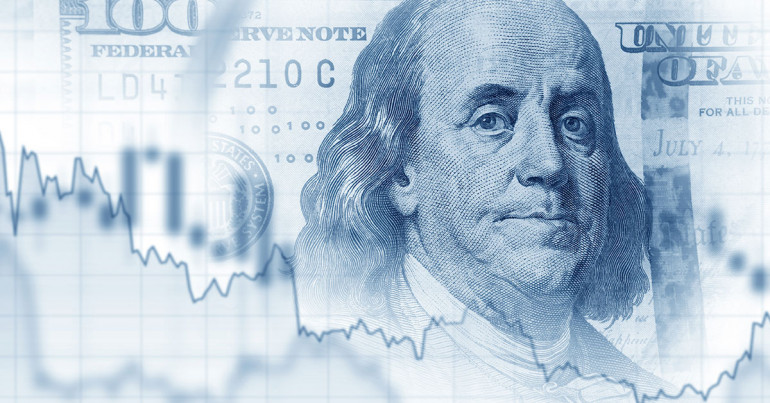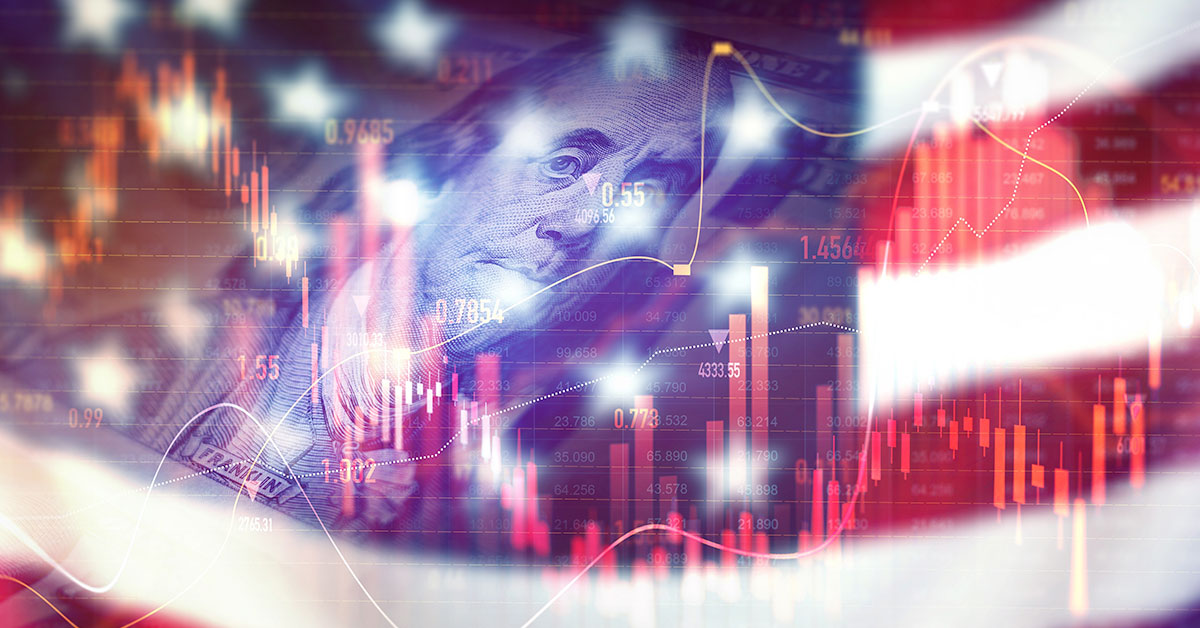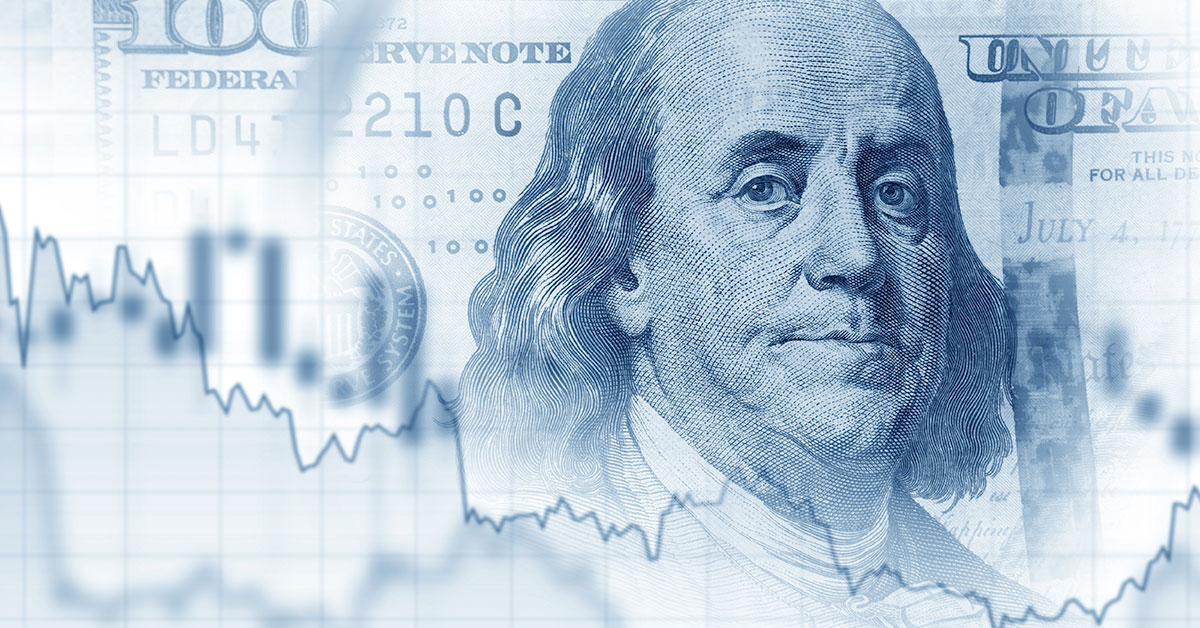
The US dollar is known as one of the strongest currencies in the world, and some would argue that due to its status as the global reserve currency, it is the most powerful currency in the world.
A major indicator of the US economy’s health and its impact on international markets is the strength of the US dollar (USD) in other currencies. Analysing economic data trends and the effects of world events is necessary to determine whether the USD will strengthen or weaken.
In this article, we outline the dollar’s strengths versus its weaknesses and analyse where it might be heading in the future.
Historical context & recent performance
In the past, the US dollar has dominated world trade often rising in times of unpredictability. For instance, the USD increased in value during the global financial crisis of 2007–2009 as investors sought the security of US assets. Similar to this during the eurozone crisis (2010–2012) worries about the euro led to a strengthening of the dollar.
Post-pandemic era
Increased uncertainty and a flight to safety caused the USD to spike at the beginning of the Covid-19 pandemic. The Dollar Index (DXY) which compares the value of the dollar to a basket of six major currencies strengthened to around 103 by March 2020. However, the dollar fluctuated as large-scale stimulus measures were implemented by the Federal Reserve and global economies started to recover. By January 2021 the DXY had dropped to about 89 but since then it has rallied again.

Key indicators of dollar strength
The US economy’s performance and the strength of the USD are closely related. The US GDP increased by 5.7% in 2021 – the fastest rate of growth since 1984 – signalling a strong economic rebound. Growth slowed down but was still positive in 2022 at 2.1%. In general, robust GDP growth draws in foreign capital which strengthens the dollar.
Another important factor is the labour market. In July 2024 the US unemployment rate was close to historic lows at 4.3%. Since strong employment signals economic stability and growth which usually supports the dollar.
Inflation is also an important indicator of future economic policy which will influence the dollar. The Consumer Price Index (CPI) which peaked at 9.1% in June 2022 increased by 4.2% as of June 2024 compared to the previous year. A major contributor to the dollar’s strength has been the Federal Reserve’s response to high inflation, by raising interest rates and ending quantitative easing. The dollar gains appeal as interest rates rise because it draws in foreign capital. By July 2023 the Federal Reserve had lifted its benchmark interest rate to a range of 5% to 5.5%, the highest level in more than 20 years.
Interest Rates
The dollar is also heavily influenced by the Fed’s monetary policy. The dollar has strengthened due to the aggressive tightening cycle from 2022 to 2023 to curb inflation. However, any future moves towards lower interest rates might make the dollar less strong by reducing its yield advantage over other currencies.
Global Factors & Impact
Additionally, key factors are market expectations and investor sentiment. An optimistic outlook for the USD is influenced by good economic data robust job growth and efficient monetary policy. The strength of the dollar on the other hand can fluctuate due to uncertainties surrounding inflation economic performance or geopolitical events.
Geopolitical Tensions
Geopolitical events have a significant impact on the dollar. Its value has fluctuated due to factors such as the ongoing conflict in Ukraine, trade tensions between the US and China and political unrest in the Middle East. Because it’s regarded as a safe-haven currency the dollar frequently benefits during periods of geopolitical uncertainty.
Global Economic Conditions
The relative performance of the US against other major economies will also influence the exchange rate. For instance, Europe’s economic problems, such as the energy crisis and sluggish growth, have made the dollar stronger relative to the euro, which also has a significant weight in the DXY. In August 2024 EUR/USD was trading at around 1.10 down from 1.22 in May 2021.
Recent Exchange Rates
The recent strength of the US economy can be seen by looking at its exchange rate against other currencies. In 2021 the USD/GBP exchange rate was around $1.35 and trended stronger to $1.17 in late September 2022, indicating relative strength versus the pound. Similarly, the dollar bought 109 Japanese Yen in 2020, by August 2024 this had increased 160.

Potential Risks & Future Outlook
Inflationary pressures are still present even with the USD’s current strength. Prolonged high inflation may force changes in monetary policy which would affect the value of the dollar. In the short run, the strength of the USD could be affected by more aggressive actions by the Fed if inflation stays high.
Global Economic Developments
Future changes in the world economy will influence the USD as well. The dollar’s performance may be impacted by shifts in the dynamics of international trade or by geopolitical developments. The competitive landscape for the dollar may change if the Bank of Japan (BOJ) or the European Central Bank (ECB) adopt a more aggressive monetary tightening strategy.
Federal Reserve Policy
Any adjustments to monetary policy or interest rates could have a big effect on the value of the dollar. Investors will be closely observing the Fed’s actions and remarks to see if they hint at potential policy changes in the future. The dollar may weaken if there are hints of a rate pause or cut but it may strengthen if tightening continues.
Conclusion
Strong economic data successful Federal Reserve policies and the USD’s reputation as a safe haven currency in the face of global uncertainty are all contributing factors to the currency’s current strong performance. The dollar has performed strongly recently as evidenced by trends showing an increase in value compared to several important currencies.
Ongoing inflationary pressures and developments in the world economy among other threats could nevertheless affect the dollar’s trajectory. Understanding the future path of the USD will require keeping an eye on global events economic indicators and Federal Reserve policies. Even though there are still many foreign and domestic factors at play the dollar is still a formidable competitor in the world currency markets, and dominance continues.
If you’re looking to trade USD into another currency, check out our currency exchange comparison tool for the best possible rates.
Caleb Hinton
Caleb is a writer specialising in financial copy. He has a background in copywriting, banking, digital wallets, and SEO – and enjoys writing in his spare time too, as well as language learning, chess and investing.



